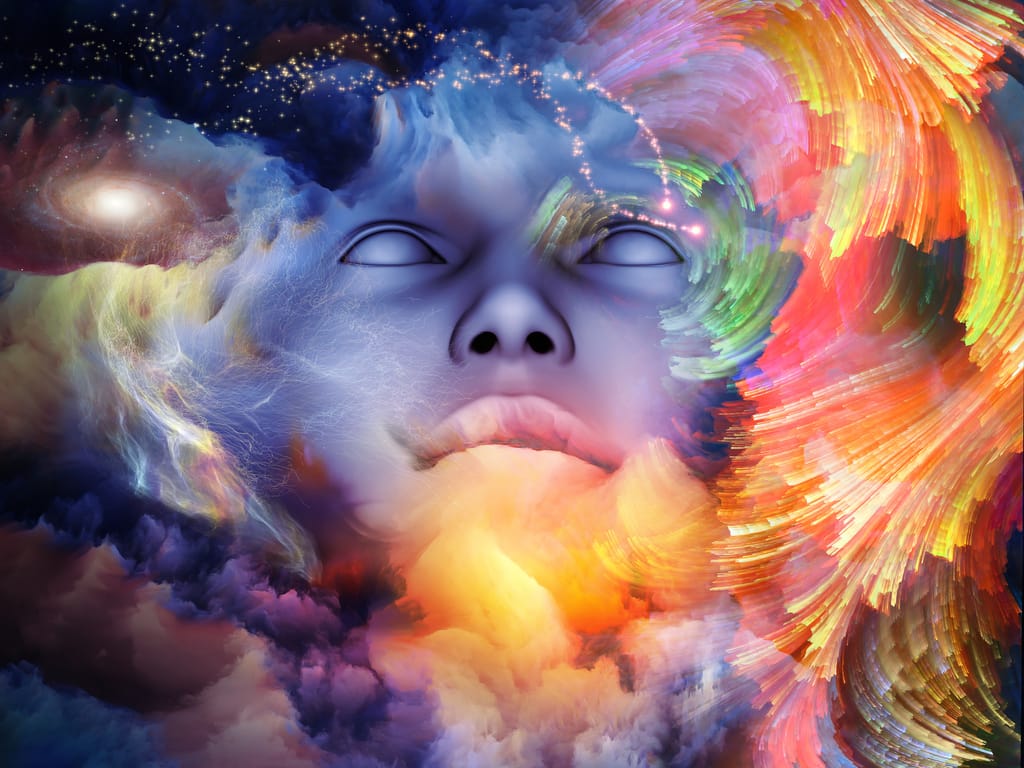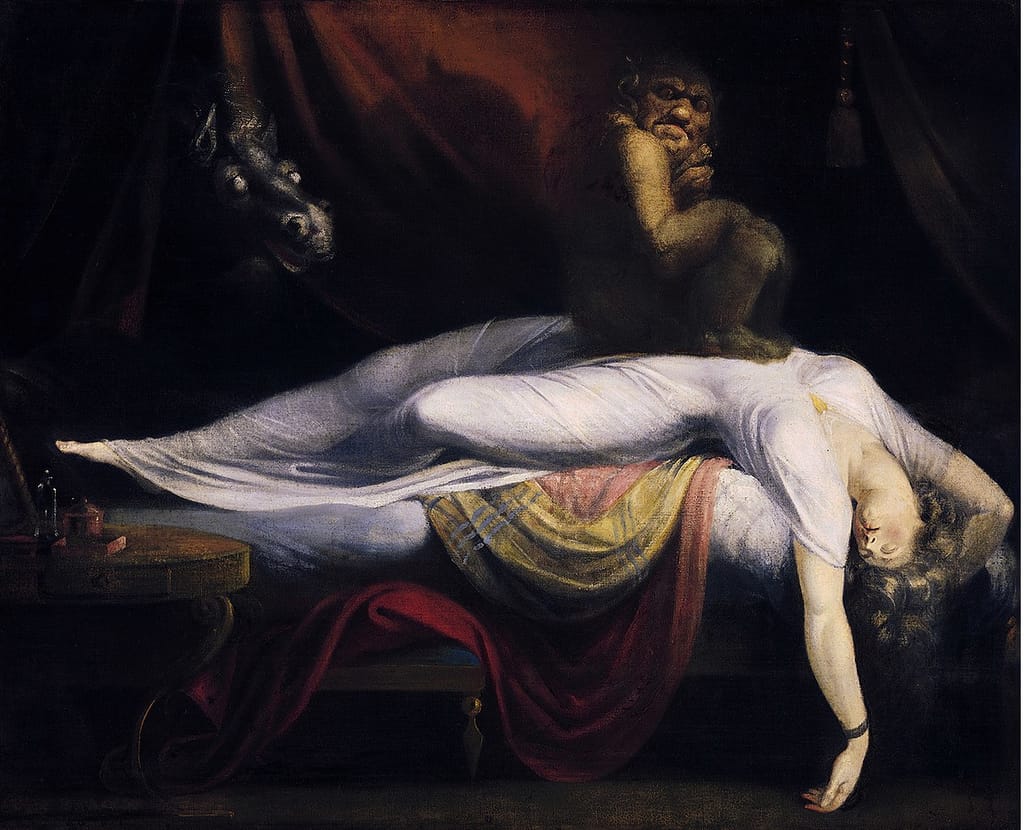What is sleep paralysis?
Sleep paralysis is a relatively common experience where an individual, either when falling asleep or awakening, briefly experiences an inability to move. It results from a disconnection between the brain and the muscles. The person may know their surroundings and can communicate verbally, but they cannot move. This condition can last a few seconds or minutes.
Symptoms
Sleep paralysis is a condition in which a person cannot move or speak for a short period while sleeping. It can take place when falling asleep (hypnagogic), during waking up (hypnopompic), or at any other time during sleep. It is not a deadly condition, but it can be a pretty frightening experience.
Symptoms can include:
- Feeling unable to move or speak
- Feeling pressure or weight on the rib cage
- Feeling like you are being choked or smothered
- Fear or terror
- Hallucinations, such as seeing or hearing strange things
The best way to deal with sleep paralysis is to relax and let the condition run its course. It is important not to panic or fight against the paralysis, as this will only make it worse. It is also a good idea to keep a journal to document any episodes that arise. If the episodes are frequent or cause a great deal of distress, then it may be worth talking to a doctor about the condition.

Causes and risk factors
Certain risk factors have been identified which may increase an individual’s risk of experiencing episodes. These include lack of adequate sleep, stress or anxiety, sleep disruptions such as jet lag or frequent night shifts, substance abuse or medication use, and certain sleep disorders, such as narcolepsy.
Additionally, the condition is more common in individuals with a family history of sleep paralysis, as well as those with a mental health disorder such as depression, bipolar disorder, or post-traumatic stress disorder. It is also more common in individuals of certain ethnic backgrounds, such as African-Americans. While the exact cause of sleep paralysis is unknown, it is believed that it is caused by a disruption in the sleep cycle. During REM (rapid eye movement) sleep, the body experiences temporary paralysis as a protective measure so that individuals do not act out their dreams. In some cases, this paralysis may occur while the individual is still awake, leading to an episode of sleep paralysis.
Strategies
The first strategy for overcoming sleep paralysis is to reduce stress and anxiety. Stressful events can trigger sleep paralysis, so finding ways to reduce stress levels can help. People can try relaxation techniques such as yoga, deep breathing, and mindfulness practices. Other stress-relieving activities such as reading, listening to music, or spending time with friends can also be beneficial.
People subject to sleep paralysis should ensure they have a regular sleep schedule. Going to bed and waking up at the same time each day can help improve the quality of sleep, which can reduce the risk of sleep paralysis. It is also important to limit screen time before bed, as the blue light from devices can interfere with sleep.
People that suffer from that condition on a regular basis will benefit from creating a calming sleep environment. Keeping the bedroom dark and cool, avoiding caffeine late in the day, and avoiding eating heavy meals before bed can improve sleep quality. Using white noise or sound machines can help block out distracting noises and create a peaceful atmosphere. Finally, people can talk to their doctor about medications or supplements for improving sleep.

Sleep paralysis and nightmares
Sleep paralysis is often accompanied by intense, vivid nightmares that cause considerable distress. For centuries, these episodes have been the subject of folklore, superstition, and horror stories, and only recently have scientists begun to explore the connection between sleep paralysis and nightmares. While the exact cause of sleep paralysis is unknown, it is believed to be linked to disruptions in the normal stages of sleep. It can occur as a single episode or as a recurrent condition, and it is more common in people who also suffer from narcolepsy, a disorder characterized by excessive daytime sleepiness.
People with sleep paralysis may also experience other symptoms such as visions or hallucinations, a sensation of pressure on the chest, an elevated heart rate, and fear. Evidence suggests that nightmares are closely linked to sleep paralysis, and that nightmares may actually help explain why episodes occur.
Nightmares can be triggered by intense emotions during the day, such as fear, stress, or anxiety, and these emotions can linger in the subconscious while the body is in a state of paralysis. This can lead to vivid, disturbing dreams that the person is unable to escape from. Studies have shown that people with sleep paralysis are more likely to experience nightmares than those who do not suffer from this condition. It is possible that the psychological impact of the paralysis causes the nightmares, or that the two conditions are related in some other way.
Finally, there is evidence to suggest that nightmares associated with sleep paralysis can be treated. Cognitive behavioral therapy (CBT) is a form of therapy that can help people identify and change any negative thought patterns that may be contributing to their nightmares. CBT can also help people learn techniques to reduce stress and improve sleep quality.
Conclusion
Sleep paralysis occurs when a person passes through a stage of sleep known as REM sleep and they cannot move their body. This can last a few seconds to a few minutes. It is not critical and is a common phenomenon.
Reference
- Sleep paralysis. (2017, September 12). Stanford Health Care. https://stanfordhealthcare.org/medical-conditions/sleep/nighttime-sleep-behaviors/sleep-paralysis.html
- Suni, E. (2023, February 9). Sleep Paralysis: Symptoms, Causes, and Treatment. Sleep Foundation. https://www.sleepfoundation.org/parasomnias/sleep-paralysis
- Santos-Longhurst, A. (2020, November 24). The Real Story Behind Those Sleep Paralysis Demons. Healthline. https://www.healthline.com/health/sleep/sleep-paralysis-demon